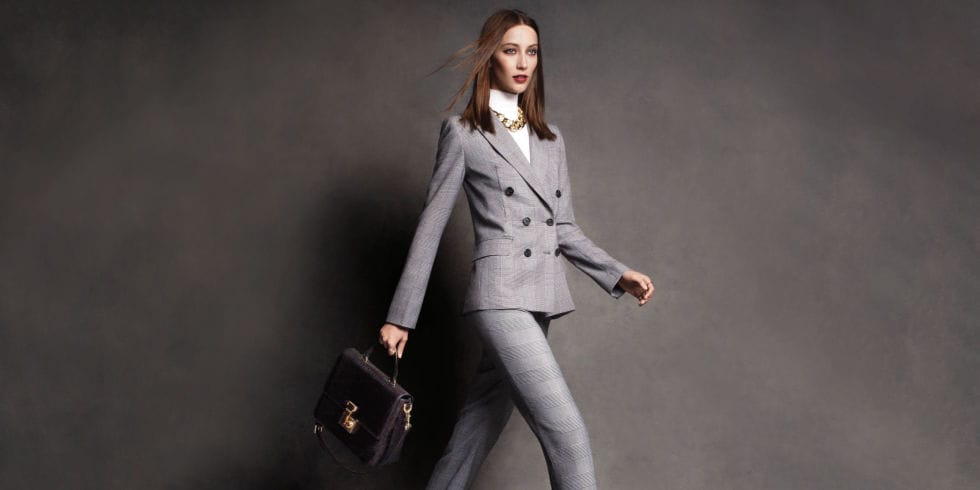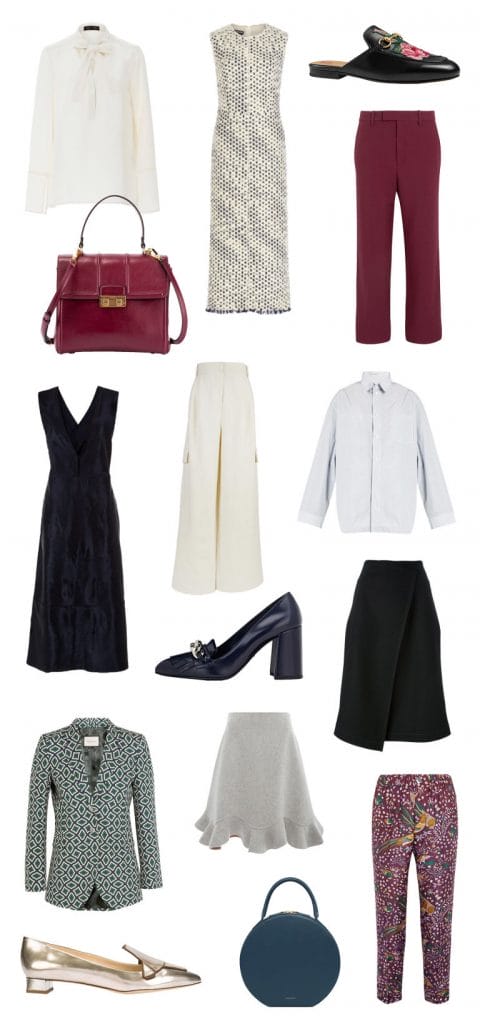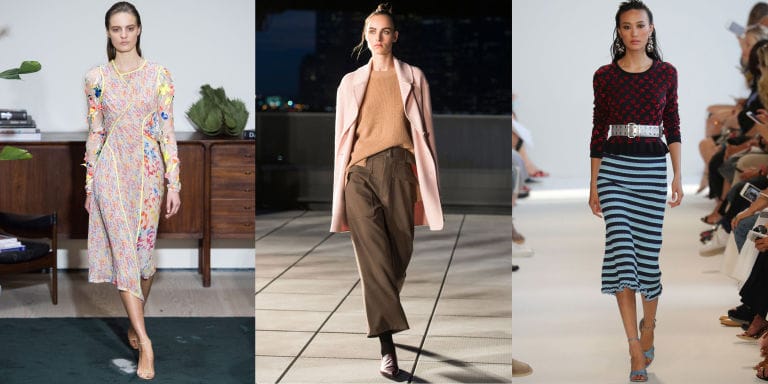
When Annette Spillane, a former Senior Manager at Ernst and Young, first started working in finance 12 years ago, there was “no concept” of fashion-forward women dressing in their own style. Working in an office meant women dressing to match their male counterparts: boxy blazers, minimal jewelry, and neutral tones reigned supreme. There was nothing, minus the clicking of heels, to set them apart.
Today, though, things are a little different. “Dress codes have definitely loosened up, it’s about expressing yourself,” Spillane says. “My philosophy is to have one statement item; it used to be shoes, but now it’s jewelry.”
And she’s not alone. According to data from staffing service OfficeTeam, 18 percent of senior managers say employees are “much less formally dressed” than they were five years ago; with 31 percent of workers preferring business casual and 27 percent preferring no dress code at all. “More people want to show creativity, whether they are a creative person or not, and one way to do that is through your attire,” explains Brandi Britton, District President for OfficeTeam. “And there is the argument that business casual and casual attire is more comfortable.”
Dress codes have definitely loosened up, it’s about expressing yourself.
This idea of comfort has prevailed throughout the tech industry, where the likes of Steve Jobs and Mark Zuckerberg pioneered sweaters, turtlenecks and jeans as office-appropriate—a dress-for-ease approach that eventually seeped into the collective conscious.
“In tech, what are you doing? You’re sitting at your desk, so you want to be comfortable,” says Erica Lockheimer, Senior Director at LinkedIn and head of the company’s Women in Tech initiative. “You want to be able to kick off your shoes, hold your legs in your desk chair, listen to your music and code, code, code; you’re not going to do that if you’re in some stiff outfit.”
On the flip side, women in tech long faced pressure to “dress like a dude,” says Lockheimer. “I conformed to my environment and felt more comfortable wanting to fit in and look like the men,” she says. “It is true of that feeling, when in doubt, to be safe and conform.”
Now, though, she dresses more like herself.
“I came to LinkedIn and I realized there was a more diverse group of people who grew up with a ‘who cares’ attitude and realized it shouldn’t matter how I dressed,” explains Lockheimer.

From top left: Proenza Schouler shirt, $790, modaoperandi.com; Rochasdress, $1,245, modaoperandi.com; Gucci slippers, $750, bloomingdales.com;Lavin bag, $1,995, neimanmarcus.com; Gucci pants, $890, net-a-porter.com;Tibi dress, $3,200, tibi.com; Tibi pants, $375, tibi.com; Balenciaga shirt, $741,matchesfashion.com; Gucci blazer, $2,990, net-a-porter.com; Prada pumps, $820, barneys.com; Odeeh skirt, $435, farfetch.com; Jerome Rousseau pumps, $595, farfetch.com; Mary Katrantzou skirt, $860, modaoperandi.com;J Crew + Drake’s pants, $298, net-a-porter.com; Mansur Gavriel bag, $1095,mansurgavriel.com.
Other offices and industries are also shedding or altering their wardrobe expectations, now that “casual” is seen as a professional—and successful—look. JPMorgan Chase and Co. is one company which has adopted a business casual code. Employees can wear items like polo shirts, sweaters, casual pants, capris, and dress sandals on a daily basis.
Still, just because one company in a certain field is changing its policy, doesn’t mean it’s always universal. “There’s still a little bit of the old school mentality in that you have to look nice and play the part,” says Leslie McGowan Meyer who works in finance in Atlanta. “When I worked at a large bank, showing your shoulders and wearing peep toed shoes wasn’t allowed,” she remembers of her company’s formal dress code. “Depending on how strict your HR was really determined if you could bend the rules. I would think if you looked nice they would leave you alone but some took it more seriously than others.”
Now she is seeing small changes at her work, where clothes with a strong sartorial direction are encouraged, allowing her own style to evolve to be comfortable and professional. She often shops at Bloomingdale’s, Saks and Banana Republic for pieces that can seamlessly take her from home to the office and out to dinner with a bit of flare.
When you start to see people in higher positions dressing casual you start to see it’s ok.
“The structured dress has become as acceptable as a suit, and I can dress it up or dress it down,” says McGowan Meyer. “When I want to be fun I can put on a chunky necklace or if I want to be more formal I can add a Chanel jacket.”
Indeed, for many women a relaxed attitude to workwear has allowed them to shed their formal, and often stodgy, office costumes for more stylish, trend-based options. Spillane finds herself drawn to clothes from Moda Operandi, Matches Fashion and Avenue 32, while Milena Talavera, head of engineering at Talkdesk, shops for statement heels at at small city boutiques and department stores like Bloomingdales.

New office dressing, from left: Jason Wu, Spring 2017; Thakoon, Spring 2017; Altuzarra, Spring 2017
“I always wear heels,” says Talavera. “For me that’s just more comfortable in a professional environment and you can play around with them by wearing different colors and really making them pop. I try to evolve as the fashion trends evolve.”
Easy-going CEOs have also had a hand in this workwear shift. From Google’s Larry Page, Vice Media’s Shane Smith, The Pekoe Group’s Amanda Pekoe and Alchemy P4 Fund’s Pilar Stella, senior managers are influencing how their employees dress at work. “When you start to see people in higher positions dressing casual you start to see it’s ok,” says Lockheimer. “Another perspective is that corporate leaders want to be more approachable.”
Executives, it seems, are shedding the formal, often uptight and boring office attire to instead wear their personalities on their (literal) sleeves and project a relatable sense of authority that says: “I might be the boss, but I’m someone you should feel comfortable around.”
Now able to showcase themselves in a more self-expressive light, women are no longer being asked to sacrifice their personal style to be considered an equal in the workplace. Ultimately, it’s their skills and work ethic that speaks to their capability as an employee, not the clothes they wear.
Finally, says, Spillane, “you get to bring yourself to work.”
From Harper’s BAZAAR



